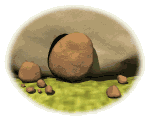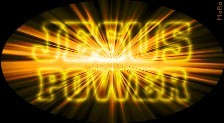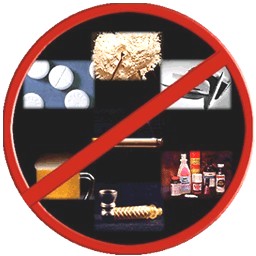(Please be advised that any positive statements about LSD from any of the below mentioned authors are not necessarily the opinions of
Kraig J. Rice)
by Kraig J. Rice
INTRODUCTION TO LSD
EFFECT OF LSD ON THE HUMAN MIND
EFFECT OF LSD ON THE HUMAN BODY
RISKS ASSOCIATED WITH LSD USE
WHY SOME PEOPLE TAKE LSD
CONCLUSION
MORE INFO (not in my original paper)
A NOTE FROM KRAIG J. RICE
IS THERE SPIRITUAL HELP AVAILABLE FOR A PERSON IN TROUBLE?

The abundant appearance of LSD in America marked the introduction of a mystical drug among adults and adolescents. Experts feel that there is a promising potential in this fascinating drug for the treatment of patients, for psycho-analysis, and psycho-therapy. This drug if misused and abused, will result in violent sickness and death- it is not a solution for life's problems. Why is LSD a drug of such high importance in America?
The medical term for LSD is d-lysergic acid diethylamide tartrate. It is derived from a black fungus (ergot) which develops on plants, especially Rye. It is colorless, tasteless, and odorless when dissolved in water. It is called a hallucinogenic and is similar in its effects to marijuana, peyote, psilocybe or Mexicana, the so-called "sacred mushrooms" which the Mazatec Indians have been eating as a religious rite for centuries.1
LSD, although odorless, colorless, and tasteless, is one of the most potent drugs known. A single ounce of LSD would provide an average dose for some three hundred thousand people. An average dose is one hundred micrograms, an amount barely visible to the naked eye. It is two hundred times more active than Cocaine and has been considered for use in chemical warfare.
Dr. Albert Hoffmann, a Swiss scientist, discovered LSD by accident in 1938. He had been working with d-lysergic acid and in the course of trying different chemical combinations he discovered LSD. It was not until 1943 that Dr. Hoffmann discovered the hallucinogenic properties of this substance by accidentially absorbing some of the chemical into his system through his fingertips. He reported on its visual effects, saying he had "fantastic visions of extraordinary vividness, accompanied by a kaleidoscopic display of intense coloration."
The Federal Food and Drug Administration did not- and still does not- approve it for marketing. Somehow over the years LSD escaped from the laboratory, where it had been the subject of careful scientific inquiry, and became invested with an aura of magic, seemingly offering a panacea for many of mankind's problems.2
LSD is most commonly administered orally. A sugar cube has LSD placed on it and this is eaten, or when in powder form, LSD is usually dissolved in a sweet liquid such as Vodka or orange juice, or in water, and drank. The drug has been known to be placed on "animal crackers" or "Candy Wafers", and other items such as chewing gum, gummed flaps of envelopes, or placing some on cigarette tobacco and Marijuana. The drug may also be "skin popped" or taken intravenously.3

The mechanism by which LSD affects the human mind is still unknown. Nevertheless, there are many theories concerning this. Sidney Cohen, M.D., once the psychiatrist-administrator with the Veterans Administration Hospital in Los Angeles, has provided the following hypothesis:
LSD seems to affect those parts of the brain (the forebrain, midbrain, hypothalamus and hippocampus) where the imput of information from the senses is decoded and processed. A substance that plays an important role in organizing and channeling this sensory information is serotonin. LSD is known to inhibit serotonin activity. The predominance of mental symptoms might lead to the assumption that LSD accumulates in the brain, however, only a small portion of LSD ever reaches the brain. The bulk of LSD is found in the small intestines, liver and kidneys after an intravenous injection.5
LSD is an idiosyncratic drug in that every individual has a different reaction to it. It is an error to call LSD a "consciousness-expanding" drug, inasmuch as it actually diminishes consciousness; if anything, it is an "unconsciousness-expanding" drug because it allows things inside a person to flood the sensory awareness. However, it is a stimulant and not a depressant to the central nervous system.
Four major types of acute symptoms have been identified after LSD ingestion. These are:
LSD does a number of things to the brain. One of these is that in large amounts, the discriminating, critical capacity is lost. The ability to observe oneself, to evaluate the validity of one's ideas and swift flowering fantasies, is lost. The strangest illusions seem overpoweringly true.7 Colors seem more enhanced, things seem more enhanced and assume meanings far beyond their ordinary connotation. All this happens because of the loss of the ability to evaluate and scrutinize.
The effects of LSD have been described anywhere from "indescribably beautiful to horrifying nightmares beyond description"8 A person while under the influence of LSD is said to be on a "trip". The symptoms of a person on a "trip" include:
The person on a "trip" is hypersensitive, hypersuggestible, and readily influenced by the things and people around him. A negative experience or "bum trip" is when a person has horrifying nightmares and is in mental agony. These are prevalent because mostly all people have a sufficiency of repressed, buried, hurtful memories. When these happen to be unleashed they can overwhelmingly frightening and produce a disintegration of mental functioning, fearful symbolic visions, and a tortured LSD eternity.9 A good "trip" has the following characteristics: a loss of the self and a feeling of oneness with the universe; a dissolution of time-space orientation, a numinous sense of awe, wonder, or power, along with feelings of bliss, love, or ecstasy.10
Although LSD is widely described as hallucinogenic, this description is not entirely accurate. Persons who see and hear things after an LSD ingestion usually perceive actual objects or sounds as accentuated or distorted, or both; that is, faces melt away, bodies merge with walls, solid items pulsate, and so forth. These are illusions rather than true hallucinations, although sometimes the latter do occur. An illusion is a perceptual distortion of something that is seen; a true hallucination is seeing a nonexistent image.11
The subjective feeling of enhanced creative powers while under the drug is unquestionable. Unique thought sequences, made visible, flow past rapidly and endessly. The American society now has psychedelic art, psychedelic motion pictures, and, no doubt, psychedelic music. However, LSD will reduce motivation as often as it will intensify it. Furthermore, the person who comes to depend upon chemical sources for the exercise of his imagination tends to mistrust his ability to use his imaginative powers when not under the influence.12
LSD can be used to change the personality structure of a human being. Richard Alpert, Ph.D., a pioneer in psychedelics and formerly Psychology Professor at Harvard University, has stated:
LSD users develop a subjective "appreciation" of the effects of the drug. In other words, they respond to the drug because it provides certain sensations or reactions which they enjoy. They come to utilize the drug as an instrument in their adjustment to life, relying on it for the fulfillment which others achieve without the help of drugs. Users who urge others to take LSD often say that using LSD is the only way to find oneself.15
LSD has few physiological effects. The most objective one is dilation of the pupils of the eyes. Users often wear sunglasses, even at night, to keep light out of their eyes. Although chronic changes do show on electrocephalograms. An unusual effect of LSD is that a person can have a recurrence of symptoms, in all their original intensity, many months after taking LSD without having taken any more of it during that period of time.16
The body does build up a tolerance to LSD. If the drug is taken on successive days, larger and larger doses are necessary to obtain the original experience and many times the person may have less and less effects from the larger doses. The tolerance diminishes almost as rapidly as it builds and after a lapse of several days (usually three or four) the tolerance will have been lost, without the discomfort of withdrawls.17
A lot of controversy has arisen whether or not LSD affects the human body in any way. Richard Alpert stated:
It is a proven fact that many people have had their lives completely ruined because of LSD.19 A common term used among LSD users is the word "trip-out". This is the worst extreme that a person who takes LSD can reach. This term applies to a person who over indulged in his use of LSD and consequently his mind became permanently damaged. "Tripping-out" can also result in death.
Lawrence Schiller, a reporter for Time and Life Magazines, believes from his personal research that approximately four million Americans took LSD in 1966. Perhaps as many as seventy per cent of all users were high school and college students, including dropouts. Schiller also stated that the majority of the users knew surprisingly little about the drug and what it can be all about. They couldn't understand the dangers of a negative experience and they couldn't know how to assimilate and use the benefits of a good "trip". Some had read about LSD but few had looked at the subject closely.20
Laws have been passed in an attempt to control the use of LSD. The federal Drug Abuse Control Amendments of 1965 made possession of LSD for sale or manufacture illegal. The State of California went a step further, making even the possession of LSD and similar drugs illegal. This law became effective on October 6, 1966.21
Risks reported in popular articles include, especially for LSD:
Many people take LSD for many different reasons. "LSD explorers" are people who have heard about the sensory awareness produced by the drug and are curious to experience it.23
The "social LSD takers" comprise another group. These are the people who live in a subculture which consists mainly of persons using LSD. In order to remain in the group and to be able to contribute to its conversation, they take LSD as a "social potion".
Another group takes LSD for hedonistic reasons- for "kicks" or "highs". They have heard it brings on a state of great pleasure and fun and want "a piece of it". In this group also are people who are dissatisfied with reality. Either they are uncomfortable in it or they find it defeating and frustrating, and therefore they want to interrupt reality with periodic LSD "trips".
A different group consists of persons who are hoping for the "magic pill" that will "cure" them of what they are. These people are looking for some miraculous cure through the use of LSD.
Persons who take LSD accidentally form another group, and there are also individuals who, without their consent, are given LSD. Still another group of people exposed to LSD consists of those who have been given the drug experimentally during research projects.
Sidney Cohen stated this with relation of LSD to social environment:
In New York, city officials stated that LSD could be a potentially disabling weapon, and in Amsterdam teen-agers threatened to disorient the population by placing only a few ounces of LSD in the city's water supply.26
So, is LSD a social problem or not? The research of the author of this paper feels it is. What about the solving of this problem? The answer, quite simply, is to educate young people as to the dangers and hazards of this drug. It is illegal but so is marijuana, but laws do not seem to halt its use.
The spiritual "law of displacement" could play an important part for those people presently taking the drug. Teen Challenge, founded by David Wilkerson, has found that the Baptism in the Holy Spirit
LSD is a very useful drug in that it is currently used in legitimate channels for research on brain function, personality structure, and schizophrenia; for acceleration on some courses of psychotherapy; and for the consciousness-expansion and improvement of creativity.
The harmful exploitation of LSD is hurting the American society more than benefiting it. John F. Kennedy once said, "It should be our earnest intention to insure that drugs not be employed to debase mankind, but to serve it."27 Aldous Huxley also stated, "That humanity at large will ever be able to dispense with artificial paradises seems very unlikely."28
Not only does LSD affect the mind, but it can lead to mental sickness and death. The unresponsible people who carelessly take LSD create a burden for society. There are many covered secrets behind the manufacture, peddling, and selling of LSD:
1Mike G. Markulis, LSD, no publisher, 1966, page 1.
This was originally a term paper that I presented to Rev. A. Edward Strang of the Dept. of Education at Bethany Bible College (now Bethany University) in partial fulfillment of the requirements for the course Sociology 101 in December 1971 when I was a student there. I got an A- on this research paper. I thought I would share it with you because of the interest in this drug.
Note:
So, LSD is
nothing to play around with. If you are on it I recommend that you accept Jesus Christ into your life (invite Him to come into your heart) and after you ask Him to, He will give you the power to break the chains of this drug addiction.
My original paper was done in 1971. There have been a few developments since then:
"More than 200 types of LSD tablets have been encountered since 1969 and more than 350 paper designs have been acquired since 1975. Designs range from simple stars in black and white to exotic artwork in full four-color print. Inexpensiveness (prices range from $2 to $5 per dosage unit or "hit", wholesale lots often sell for as little as $1 or less), ready availability, alleged "mind-expanding" properties, and intriguing paper designs make LSD especially attractive to teenagers and college students. Some users are now as young as junior high age.
Dosages of LSD are measured in micrograms, or millionths of a gram. By comparison, dosages of cocaine and heroin are measured in milligrams, or thousandths of a gram. Compared to other hallucinogenic substances, LSD is 100 times more potent than psilocybin ("magic mushrooms") and 4,000 times more potent than mescaline. The dosage level that will produce an hallucinogenic effect in humans generally is considered to be 25 micrograms. Over the past several years, the potency of LSD obtained during drug law enforcement operations has ranged between 20 and 80 micrograms per dosage unit. The Drug Enforcement Administration (DEA) recognizes 50 micrograms as the standard dosage unit equivalency.
With LSD tablets, it is difficult to tell how much LSD is actually in the blotter. Tabs are often dipped in another chemical agent in order to bind the LSD to the paper. The binding chemical agents can often cause side effects, such as grinding of the jaw and restlessness. Liquid acid is ingested per drop. It is generally much stronger (containing 200 to 400 micrograms per drop). Many users prefer liquid acid to tabs because no chemical binding agents are needed. Therefore, the "trip" seems smoother.
Dr. Albert Hofmann was working for Sandoz Laboratories in Switzerland when he discovered LSD.
LSD was initially developed as a circulatory and respiratory stimulant. However, no real benefits of the compound were identified and its study was discontinued. In the 1940�s, interest in the drug was revived when it was thought to be a possible treatment for schizophrenia. Because of LSD�s structural relationship to a chemical that is present in the brain and its similarity in effect to certain aspects of psychosis, LSD was used as a research tool in studies of mental illness.
Sandoz Laboratories, the drug�s sole producer, began marketing LSD in 1947 under the trade name �Delysid� and it was introduced into the United States a year later. Sandoz marketed LSD as a psychiatric cure-all and hailed it as a cure for everything from schizophrenia to criminal behavior, sexual perversions and alcoholism. AND Sandoz, in its LSD related literature suggested that psychiatrists take the drug themselves in order to "gain an understanding of the subjective experiences of the schizophrenic." During a 15 year period beginning in 1950, research on LSD and other hallucinogens generated over 1,000 scientific papers, several dozen books, and 6 international conferences, and LSD was prescribed as treatment to over 40,000 patients.
The late Timothy Leary gave LSD its fame after being kicked out from Harvard University for using students and other volunteers to study the effects of LSD on the brain. He later became an advocate of the drug, promoting its "mind expanding qualities." LSD as a cultural phenomenon in the 1960s and 1970s has been a subject for much literature, such as Tom Wolfe's "The Electric Kool-Aid Acid Test".
During the late 1960�s and early 1970�s, the drug culture adopted LSD as the "psychedelic" drug of choice. The infatuation with LSD lasted for a number of years until considerable negative publicity emerged on "bad trips"- psychotic psychological traumas associated with the LSD high- and "flashbacks", uncontrollable recurring experiences. As a result of these revelations and effective drug law enforcement efforts, LSD dramatically decreased in popularity in the mid-1970�s. Scientific study of LSD ceased around 1980 as research funding declined.
LSD's use in scientific research has been extensive and its use has been widespread. Although the study of LSD and other hallucinogens increased the awareness of how chemicals could affect the mind, its use in psychotherapy largely has been debunked. It produces no aphrodisiac effects, does not increase creativity, has no lasting positive effect in treating alcoholics or criminals, does not produce a model "psychosis" and does not generate immediate personality change. However, drug studies have confirmed that the powerful hallucinogenic effects of this drug can produce profound adverse reactions, such as acute panic reactions, psychotic crises, and flashbacks."
This info comes from the world wide web. Web address is
"What is the cure for LSD? Here are the basic steps:
What are the slang terms used for LSD?
"LSD came under Federal legal control in 1970 under the U.S. Controlled Substances Act. It's a Schedule I drug, which means it's considered to have a high potential for abuse, present an unacceptable safety risk, and have no acceptable medical use.
However, LSD Research has been renewed-
The current round of research activity got under way in the late 1980s, bolstered in large part by advances in the understanding of brain chemistry.
FDA has granted IND status to several psychedelic drugs in recent years. The IND status means the drugs have been studied in the laboratory for their major physical and chemical properties and tested in laboratory animals for their pharmacologic and toxic effects.
In granting IND status, FDA carefully monitors study protocols to ensure that they meet FDA's safety and scientific standards. "The studies have to be safe and conducted under controlled conditions," said Michael Klein, Ph.D., a senior interdisciplinary scientist on FDA's pilot drug evaluation staff. "Otherwise, the research may offer questionable or, at best, minimal returns."
Because the drugs are controlled substances, scientists must apply to the Drug Enforcement Administration for a Schedule I permit in conjunction with filing an IND application with FDA. And, to receive IND approval, researchers must document that they have a suitable drug source whose manufacturing capabilities meet the agency's good manufacturing procedures. That presents a challenge because few reputable U.S. drug manufacturers make these drugs.
To get high-quality drugs, psychedelic researchers rely on European manufacturers, hospital pharmacies, and university chemistry labs."
Yes. Don't ever rule God out. He is the first One who you should turn to when you have a problem. Our young people in America are under attack and it's not God's will that we lose one of them. The church should not shoot it's wounded.
At one time I knew a devout Christian man who had a drinking alcohol addiction left over from his unsaved life style. He trusted the Lord to help him break his addiction but nothing happened at first. But he persevered anyways. Then one day, when he didn't even know it, the Lord did something deep in his life and his addiction was completely broken. Jesus Christ broke the chains of his addiction.
Rev. David Wilkerson in his book, The Cross and The Switchblade, stated that there was only one thing that would permanently break the heroin addiction of young people on the streets of New York City. That one thing was the Baptism in the Holy Spirit
If you or someone you know has a current LSD addiction all hope is not lost. Offer them salvation through Jesus Christ first. Then influence them to receive the
Here is some practical advice how to go about it.
Once Christ comes to literally live inside of your heart take your surplus illegal drugs and throw them away. Then find the nearest
Once you are strong in the resurrection power of Jesus Christ the pastor will encourage you to receive the power of the Holy Spirit in a subsequent act of spiritual baptism
No one ever said it would be easy but I am confident that you can do it if you want to.
Kraig J. Rice
"It appears that LSD interferes with the sorting and coding of incoming information, permitting an overflow of sensation and a lessening of intactness of the self."4
It also has been suggested that LSD interferes with the body's use of adrenalin and, by blocking some system of enzymes, leads to the production of substances related to adrenalin and having the property of producing hallucinations.
illusions and hallucinations;
anxiety, often to the point of panic;
severe depression with suicidal thoughts and attempts; and
confusion, often to the point of not knowing where one's self is.6
The emotional correlate is ecstasy,
Psychological effects include:
distortion of perceptions,
intensification of sensations,
illusions,
distortion of time sense,
true hallucinations, and
delusions.
anxiety,
nausea,
extreme fear or panic about the prospect of relinquishing control, and
external hallucinations. The rational mind is stripped away with LSD and is made emotionally liable.
"The trip a person takes for personality should be well programmed or planned in advance. This is what is meant by 'programming' psychedelic sessions- planning the session so that while you are in a state of expanded consciousness, you can review certain aspects of yourself or the world and form some new chemical associations or habits in your brain."13
Sidney Cohen also states:
"If LSD produces desirable personality alterations (and I believe it possible, particularly, but not exclusively, with the aid of a psychotherapist) it does so when it demonstrates the need for change. Seeing the need provides the motivation. The hard work of change itself remains, the retraining of the ineffective habits of a lifetime."14
A person who uses LSD frequently will have a dependence on the drug. LSD does not cause physical dependence with withdrawal symptoms but does cause severe psychological dependence. Desire to continue taking the drug is present, and LSD users, in contrast to users of hard narcotics, often develop a missionary or proselytizing quality.

EFFECT OF LSD ON THE HUMAN BODY
"LSD is safer (on a percentage basis) than alcohol or cigarette smoking. As far as damage to mental health, the suicide and hospitalization statistics are unequivocal; LSD is less dangerous than a four-year liberal arts college education."18
Many doctors are now trying to prove that LSD affects the chromosome make-up of the genes in women because deformed or mutant infants have been born at childbirth.

RISKS ASSOCIATED WITH LSD USE
psychosis,
suicide,
continuing undesirable personality changes,
release of sexual and aggressive impulses (leading to murder, rape, homosexual episodes),
habituation,
hallucinatory redintegration (return of the LSD state unasked and without taking the drug),
development of interests in illicit drugs,
development of "cult" interests, and
consequent warping of ordinary social outlooks,
reduced work and social effectiveness,
risk of divorce,
increased accident risks when driving under drug influence.
Its explotative use (control, seduction, purposeful production of psychoses) has also been reported.22
LSD on a sugar cube
WHY SOME PEOPLE TAKE LSD
"It is no wonder that we yearn to get away from it all, to go back to that egoless state when we were at one with our environment. It is pointless to call it a regression; words do not alter its attractiveness for those who need more than harsh sanity. Our nerve fails. We want pleasure without obligation, answers rather than problems, magic, not uncertainty. The tensions, the bitterness, and the shearing stresses make living in the midst of explosive upheavals difficult. We speak with concern about explosions. The impact on man living through information, transportation, energy, communication, and the technological explosions is equally stressful."24
Society should be highly concerned with drug addiction also. Drug addiction is a state of periodic or chronic intoxication produced by the repeated consumption of a drug (natural or synthetic). Its characteristics include an overpowering desire or need (compulsion) to continue taking the drug and to obtain it by any means, a tendency to increase the dose, a psychic (psychological) and generally, a physical dependence on the effects of the drug, and detrimental effects on the individual and on society.25

CONCLUSION
(according to Acts 2:4) is the about the only sure way of preventing ex-heroin addicts from going back to the drug after their cure. If drugs are taken away from them, there has to be something given to them as displacement- or to take its place, and this should be the power of God.
"Bum LSD" is when the LSD is "watered down" or cut so that it loses its effectiveness after ingesting- or it can be when there is no LSD in the capsules that cost a lot of money to purchase.
Many girls, as young as fourteen years old, prostitute themselves and buy LSD and Methedrine with their proceeds.
LSD and Marijuana use may lead one to heroin addiction.
There is a criminal establishment in the LSD business today. They devise ingenious ways to manufacture it in the USA and/or to smuggle it across the borders. Many times our drug enforcement agents find multi-million dollar caches filled with LSD. LSD is indeed a drug of high importance in America for many reasons...

2Angela Kitzinger, Drug Abuse, California State Department of Education, 1966, page 35.
3Markulis, op. cit., page 5.
4Kitzinger, Op. Cit., page 36.
5Markulis, Op. Cit., page 7.
6Kitzinger, Op. Cit., page 37-38.
7Richard Alpert, Sidney Cohen, Lawrence Schiller, LSD, New York: New American Library, 1966, page 17.
8Markulis, Op. Cit., page 4.
9Alpert, Cohen, Schiller, Op. Cit., page 28.
10Ibid., page 57.
11Kitzinger, Op. Cit., page 36.
12Alpert, Cohen, Schiller, Op. Cit., pages 67-68.
13Alpert, et Al., Op. Cit., pages 52-54.
14Alpert, et Al., loc. Cit.
15Kitzinger, loc. Cit.
16Kitzinger, Op. Cit., page 37.
17Markulis, Op. Cit., page 7.
18Alpert, et Al.,Op. Cit., page 76.
19Ibid., page 24.
20Markulis, Op. Cit., page 1.
21Kitzinger, Op. Cit., pages 34.
22Robert S. DeRopp, Drugs and the Mind, New York: Grove Press, 1957, page 220.
23Kitzinger, Op. Cit., pages 41-43.
24Alpert, et al.,Op. Cit., page 31.
25Task Force Report, Narcotics and Drug Abuse, Washington: U.S. Government Printing Office, 1967, page 27.
26Alpert, et al.,Op. Cit., page 1.
27Joel Fort, Utopiates, no publisher, Atherton Press, 1964, page 1.
28Fort, loc. cit.

No Illegal Drugs
When I lived in Cloverdale, Calif. there was a family that lived across the top of the hill from us. They did not go to church. That family had 3 sons. One son was a mechanic that did a lot of work on my car. Another drove a motorcycle nearly all of the time. However, another son was a walking "zombie". I would see him from time to time aimlessly walking around the neighborhood when he was released from the mental institution to come to visit his family. He could not talk, smile, or carry on a conversation with you. It was like he was brain dead but still able to walk around. Before that, after he graduated from high school, he had a lot of promise. He was personable, intelligent, and likeable. Then he started taking LSD. That was a mistake. LSD destroyed his mind permanently. His horrible condition really hurt his family. It hurt me to see him like that. It was a totally wasted life- a life just thrown away.
LSD is most commonly sold in the form of blotter paper, which are small paper squares that have been dipped in LSD
1 little blotter square is considered a "hit"
http://www.coolnurse.com/lsd.htm








LSD Detox Center
The chains can be broken. Currently there is no medication a patient can be given to cure him or her of LSD addiction. A user must first admit to himself or herself and to others that there is an addiction problem. Detoxification is the next step. A person needs more than just strong will power to break an addiction problem like this. Below, I mention how divine intervention is the best cure. Other than that- residential treatment programs of at least 3 months in duration have the best success rates. What happens to a patient there? Education and therapy are given. Why? To deal with psychological dependency, mental obsession, and emotional compulsion. The patient is made aware that long-term addiction changes the way the brain functions and that this change is present long after the addict has stopped using this drug. The patient is helped to battle his or her cravings for the drug, is encouraged to re-stimulate his or her past, and taught about the changes in the way their brain functions.
LSD Rehab
LSD Treatment
LSD Addiction Treatment
LSD Addiction Counseling and Meetings
LSD In-Patient Treatment
LSD Out-Patient Treatment
Common nicknames for LSD are:
a, acid, animal, barrels, battery acid, beast, Big D, black acid, black star, black sunshine, black tabs, blotter, blotter acid, blotter cube, blue acid, blue barrels, blue chairs, blue cheers, blue heaven, blue microdot, blue mist, blue moons, blue star, blue vials, brown bombers, brown dots, California sunshine, cap, chief, chocolate chips, cid, coffee, conductor, contact lens, crackers, crystal tea, cubes, cupcakes, d, deeda, domes, dots, double dome, electric Kool-Aid, fields, flash, flat blues, ghost, golden dragon, goofy's, grape parfait, green double domes, green single domes, green wedge, grey shields, hats, Hawaiian sunshine, hawk, haze, headlights, heavenly blue, instant zen, l, lason sa daga,Lens, LBJ,Lime Acid, Loony Toons, Lucy In The Sky With Diamonds, lysergide, mellow yellow, mickey's, microdot, mighty Quinn, mind detergent, one way, optical illusions, orange barrels, orange cubes, orange haze, orange micro, orange wedges, Owsley, Owsley's acid, pane, paper acid, peace, peace tablets,
pearly gates, pellets, pink blotters, pink Owsley, pink panther, pink robots, pink wedge, pink witches, potato, pure love, purple barrels, purple flats, purple haze, purple hearts, purple ozoline, recycle, royal blues, Russian sickles, sacrament, sandoz, smears, snowmen, squirrel, strawberries, strawberry fields, sugar, sugar cubes, sugar lumps, sunshine, tabs, tail lights, ticket, trip, twenty-five, vodka acid, wedding bells, wedges, white dust, white lightning, white Owsley's, window glass, window pane, yellow, yellow dimples, yellow sunshine, zen, zig zag man."
This info comes from the world wide web. Web address is
http://www.drug-rehabs.org/faqs/FAQ-lsd.php
This info comes from the world wide web. Web address is
Medical Possibilities for Psychedelic Drugs by Paula Kurtzweil
http://www.fda.gov/fdac/features/795_psyche.html

IS THERE SPIRITUAL HELP AVAILABLE FOR A PERSON IN TROUBLE?
 We used to sing an old church chorus "The Lion of Judah will break every chain and give to us the victory again and again." That happened 39 years ago and the man does not drink to this day.
We used to sing an old church chorus "The Lion of Judah will break every chain and give to us the victory again and again." That happened 39 years ago and the man does not drink to this day.
(according to Acts 2:4). If a person had that power of God in their life, following their salvation experience with Christ, they could be an overcomer and not relapse back into heroin addiction again unless they wanted to.
Baptism in the Holy Spirit (Acts 2:4) complete with speaking in tongues. God is the One to break any addiction in any sincere Christian's life.
 Assemblies of God church and make an appointment to speak with the pastor there. Explain to him what has just happened to you and he will help you get into God's word and help you get sound Biblical teaching. If he can't help you directly I am sure that he will be able to find someone who can.
Assemblies of God church and make an appointment to speak with the pastor there. Explain to him what has just happened to you and he will help you get into God's word and help you get sound Biblical teaching. If he can't help you directly I am sure that he will be able to find someone who can.
(Acts 2:4). This dynamic power from God is greater than anything that Satan has to offer. You need this power to help you live the Christian life and to help you fight against the power of relapsing back to your addiction. And God is always happy to share His power with you when you ask in faith.

Bread On The Waters (BOW)
Our web address is
www.breadonthewaters.com

click on the above banner if you want to learn how to have a relationship with Jesus Christ.

![]() The story of a girl who got off of LSD
The story of a girl who got off of LSD
Find a Teen Challenge Center near where you live to help you get off of the drugs.
 Another Treatment Center That May Help You
Another Treatment Center That May Help You
 A Question God Cannot Answer
A Question God Cannot Answer
If you need Christ in your life, please read this tract.
 Encouragement
Encouragement
Read this if you need encouragement.
 Overcoming Discouragement
Overcoming Discouragement
Don't give up. Here are some tips on how to overcome discouragement.
You are valuable. Read just how much...
 A Bible Study About Miracles
A Bible Study About Miracles
Do you need a miracle to happen in your life? God still works miracles. Maybe He has one for you...
 A Man Trying To Get Away From God
A Man Trying To Get Away From God
Here is a true story about a wounded Christian who threw it all away and how he came back to God. This story may give you hope if you need it because God never stops loving and reaching out to those who are wounded.
 Who Taught the Birds?
Who Taught the Birds?
Since God taught the birds He can also teach us. But do we have ears to hear?
 Testimonies of Healing(s)
Testimonies of Healing(s)
God can heal you of your LSD addiction. Read what He has done for others.
 A Bible Study About the trial of your faith
A Bible Study About the trial of your faith
We all go through trials from time to time. Some are harder than others. Do you know how to get through a trial of your faith? Learn what the Word of God has to say about your trial and the best way to make you a conqueror through it.

![]()
Home